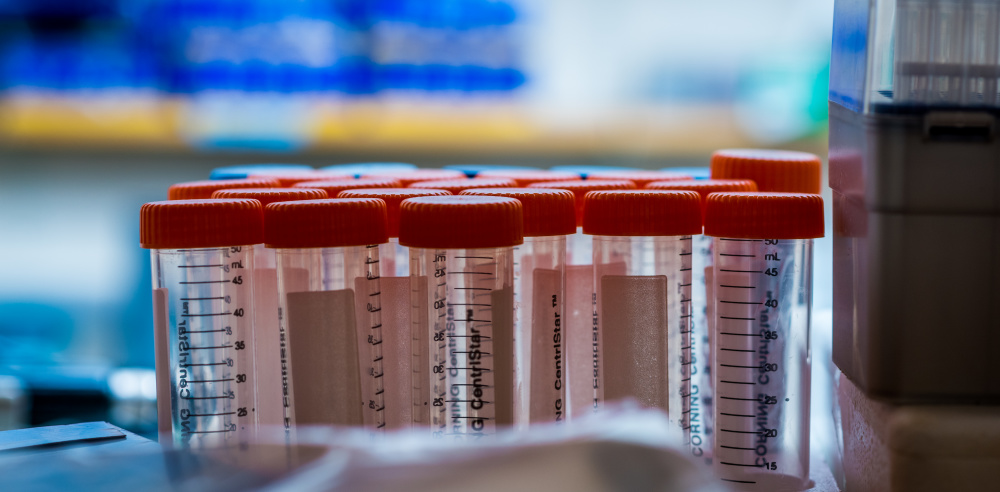- In tumors where BRCA genes are missing or mutated, combinations of PARP inhibitors and other drugs have produced impressive results in many patients. However, in many cases, the cancer becomes resistant to the drug.
- Using high-grade serous ovarian cancer (HGSOC) cells with defective BRCA1, the investigators shut down 17,000 genes, one at a time, to determine which were responsible for resistance to PARP inhibitors. The most notable one discovered generates a protein called DYNLL1. The discovery may help doctors determine which patients with HGSOC deficient in BRCA1 are likely to be resistant to PARP inhibitors, and may also “inspire the development of drug combinations that don’t produce PARP inhibitor resistance.”
 It may not be sporting to hit someone when they’re down, but when the foe is a cancer cell, there’s no merit in mercy.
It may not be sporting to hit someone when they’re down, but when the foe is a cancer cell, there’s no merit in mercy.
That’s the principle behind drugs known as PARP inhibitors. Tumor cells that lack effective BRCA genes have difficulty repairing certain kinds of DNA damage, potentially leaving them vulnerable to agents that inflict more DNA damage or further impede the repair process. PARP inhibitors do the latter. In tumors where BRCA genes are missing or mutated, combinations of PARP inhibitors and other drugs have produced impressive results in many patients.
However, the benefits aren’t universal, and even when remissions do occur, they tend to not be lasting. Patients with high-grade serous ovarian cancer (HGSOC), for example, who have inherited mutations in the BRCA1 or BRCA2 gene often respond well to PARP inhibitors. Within five years, however, the vast majority of them relapse.

In a new study, researchers led by Dana-Farber’s Dipanjan Chowdhury, PhD, and Yizhou He, PhD, have uncovered a major genetic contributor to this type of drug resistance. Using HGSOC cells with defective BRCA1, the investigators shut down 17,000 genes, one at a time, to determine which were responsible for resistance to PARP inhibitors. This comprehensive approach allowed them to generate a catalogue of genes whose loss may cause resistance to PARP inhibitors in BRCA1-deficient tumors. Of the several genes identified, the most notable was one that generates a protein called DYNLL1.
The discovery, reported in the journal Nature, may help doctors determine which patients with HGSOC deficient in BRCA1 are likely to be resistant to PARP inhibitors: those whose tumor cells are without functional DYNLL1 probably wouldn’t respond to the drugs and might benefit from other treatments.
“Our findings may also lead to new treatment strategies for these types of ovarian tumors,” Chowdhury says. “Now that we know that loss of DYNLL1 has a role in PARP inhibitor resistance, we can investigate whether the loss of this protein creates new vulnerabilities in cancer cells. This may inspire the development of drug combinations that don’t produce PARP inhibitor resistance.”
Fixing loose ends

The researchers also explored why the loss of DYNLL1 blunts the effectiveness of PARP inhibitors in HGSOC tumors with BRCA1 mutations.
BRCA1 makes repairs when both strands of the DNA molecule have been broken. Before repairs can begin, one of the loose ends from each strand must be trimmed back so the strands can reconnect properly. The researchers found that DYNLL1 stands in the way of this end-snipping. In cells where DYNLL1 is lost, therefore, DNA repair can get underway. And that, in turn, enables the cells to brush off the effects of PARP inhibitors – to become PARP inhibitor-resistant.
“Our next step will be to explore ways to overcome such resistance,” says He. “We’re creating a library of cells with all the genes known to contribute to resistance and will use it to test drug combinations that may counteract resistance. Although BRCA1 mutations are usually thought of in connection to breast and ovarian cancer, they can play a role in a wide variety of cancers. The need for resistance-proof drug combinations is high.”
